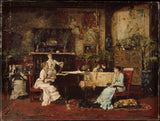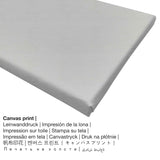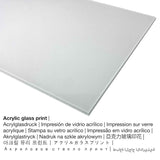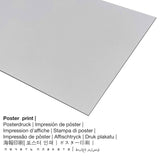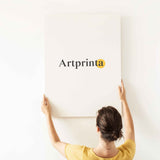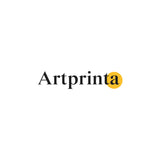Mihály Munkácsy, 1878 - Ụlọ egwu - mbipụta nka mara mma
Ụtụ gụnyere. Mbupu gbakọrọ na ndenye ọpụpụ.
Nṅomi ọmarịcha nka nke gị
"The Music Room" is an artpiece made by Mihály Munkácsy. The 140 year old artwork measures the size: 35 x 46 in (88,9 x 116,8 cm). Mmanụ na osisi was used by the artist as the medium of the artwork. The artpiece is included in the digital collection of Museumlọ ihe ngosi nka nke Obodo. With courtesy of The Metropolitan Museum of Art, New York, Bequest of Martha T. Fiske Collord, in memory of her first husband, Josiah M. Fiske, 1908 (ikike ngalaba ọha). The creditline of the artwork is the following: Bequest of Martha T. Fiske Collord, in memory of her first husband, Josiah M. Fiske, 1908. What is more, the alignment is in landscape format with a side ratio of 4: 3, nke pụtara na ogologo bụ 33% ogologo karịa obosara. Mihály Munkácsy was a male painter of Hungarian nationality, whose artistic style can primarily be classified as Realism. The European artist lived for 56 afọ a mụrụ ya n'afọ 1844 ma nwụọ n’afọ 1900.
What does the website of the The Metropolitan Museum of Art write about the 19th century artwork painted by Mihály Munkácsy? (© Nwebiisinka - The Metropolitan Museum of Art - www.metmuseum.org)
In 1874, two years after he settled in Paris, Munkácsy married the titled widow of a French general. The room depicted in this painting was in their richly decorated apartment on the Avenue de Villiers. Here musical gatherings were held, and occasionally fellow Hungarian Franz Liszt performed. Munkácsy's Parisian residence, a meeting place for fashionable society, was the setting for a large number of pictures painted between 1878, the date of this work, and 1887.
Ozi nka
| Aha nke ọrụ nka: | "The Music Room" |
| nhazi ọkwa: | sere |
| Otu izugbe: | nkà nke oge a |
| Time: | 19th narị afọ |
| Emepụtara n'afọ: | 1878 |
| Afọ nka: | ihe dị ka afọ 140 |
| Ọkara nke ihe osise izizi: | mmanụ n'elu osisi |
| Nha nke ihe osise izizi: | 35 x 46 n'ime (88,9 x 116,8 cm) |
| Ụlọ ihe ngosi nka / ebe: | Museumlọ ihe ngosi nka nke Obodo |
| Ebe ngosi nka: | New York City, New York, Njikota Obodo Amerika |
| Weebụsaịtị nke ihe ngosi nka: | Museumlọ ihe ngosi nka nke Obodo |
| Ụdị nka nka: | ngalaba ọha |
| Site n'aka: | The Metropolitan Museum of Art, New York, Arịrịọ nke Martha T. Fiske Collord, na ebe nchekwa nke di mbụ ya, Josiah M. Fiske, 1908 |
| kreditline ọrụ nka: | Arịrịọ nke Martha T. Fiske Collord, iji cheta di mbụ ya, Josiah M. Fiske, 1908 |
Onye na-ese ihe
| aha: | Mihály Munkacsy |
| okike nke onye nka: | nwoke |
| Nationality: | Hungarian |
| Ọrụ nke onye na-ese ihe: | onye na-ese ihe |
| Obodo onye nka: | Hungary |
| Nhazi nke onye nka: | omenkà nke oge a |
| Ụdị nka: | Ihe ngosi |
| Oge ndu: | 56 afọ |
| Afọ ọmụmụ: | 1844 |
| Nwuru: | 1900 |
Họrọ ihe kacha amasị gị
Ndepụta ndetu ngwaahịa na-enye gị ohere ịhọrọ ngwa na nha dabere na mmasị gị. Anyị na-ahapụ gị ka ịhọrọ n'ime ụdị ndị a:
- Glass acrylic e biri ebi (nwere ezigbo mkpuchi iko): A glossy print on acrylic glass, which is often named as a UV print on plexiglass, transforms an original artwork into marvellous home décor. In addition to that, it offers a viable alternative to canvas or dibond fine art prints. The acrylic glass protects your selected art print against sunlight and external influences for many more years.
- Mbipụta akwụkwọ mmado (ihe kwaaji): A poster is a UV printed flat canvas paper with a fine surface finish, that resembles the actual work of art. Please note, that depending on the size of the poster print we add a white margin 2-6cm round about the painting, which facilitates the framing.
- Aluminom ihe eji eme ihe: An Aluminium Dibond print is a print with an impressive effect of depth. For the Direct Aluminium Dibond print, we print the chosen artpiece onto the aluminium composite white-primed surface.
- Mbipụta kanvas: A printed canvas applied on a wooden frame. The great advantage of canvas prints is that they are relatively low in weight, meaning that it is easy to hang your Canvas print without extra wall-mounts. Because of thatcanvas prints are suitable for all kinds of walls.
Banyere ihe
| Nkewa bipụta: | ezi nka mmeputakwa |
| Usoro mmeghari: | dijitalụ mmeputakwa |
| Production usoro: | Mbipụta UV ozugbo (mbipụta dijitalụ) |
| Nlụpụta: | arụpụtara na Germany |
| Ụdị ngwaahịa: | mmepụta ihe na-achọ |
| A na-atụ aro iji ngwaahịa eme ihe: | mkpokọta nka (mmeputakwa), mgbidi gallery |
| Nhazi: | nhazi odida obodo |
| Oke akụkụ: | 4: 3 |
| Mmetụta ihe onyonyo: | ogologo bụ 33% ogologo karịa obosara |
| Ngwa ngwaahịa dị: | Mbipụta kwaaji, mbipụta ọla (aluminium dibond), mbipụta enyo acrylic (nwere ezigbo mkpuchi iko), mbipụta akwụkwọ mmado (akwụkwọ kwaaji) |
| Mbipụta kanvas (akwa akwa n'elu etiti ihe ndọtị) ụdị nha dị iche iche: | 40x30cm - 16x12", 80x60cm - 31x24", 120x90cm - 47x35", 160x120cm - 63x47" |
| Mbipụta iko acrylic (nke nwere ezigbo mkpuchi iko): | 40x30cm - 16x12", 80x60cm - 31x24", 120x90cm - 47x35" |
| Mbipụta akwụkwọ mmado (akwụkwọ kwaaji): | 40x30cm - 16x12", 80x60cm - 31x24", 120x90cm - 47x35" |
| Nha ebipụta aluminom: | 40x30cm - 16x12", 80x60cm - 31x24", 120x90cm - 47x35" |
| Nhazi mbipụta nka: | na-enweghị etiti |
Disclaimer: We try everythig possible in order to describe the products with as many details as possible and to demonstrate them visually. However, the tone of the printing material and the imprint can vary slightly from the presentation on the monitor. Depending on the settings of your screen and the quality of the surface, color pigments may not be printed as exactly as the digital version shown here. Considering that all art prints are printed and processed by hand, there might as well be slight differences in the exact position and the size of the motif.
Ederede a bụ ikike ọgụgụ isi ma chekwaa ya site na nwebisiinka ©, Artprinta.com (Artprinta)

